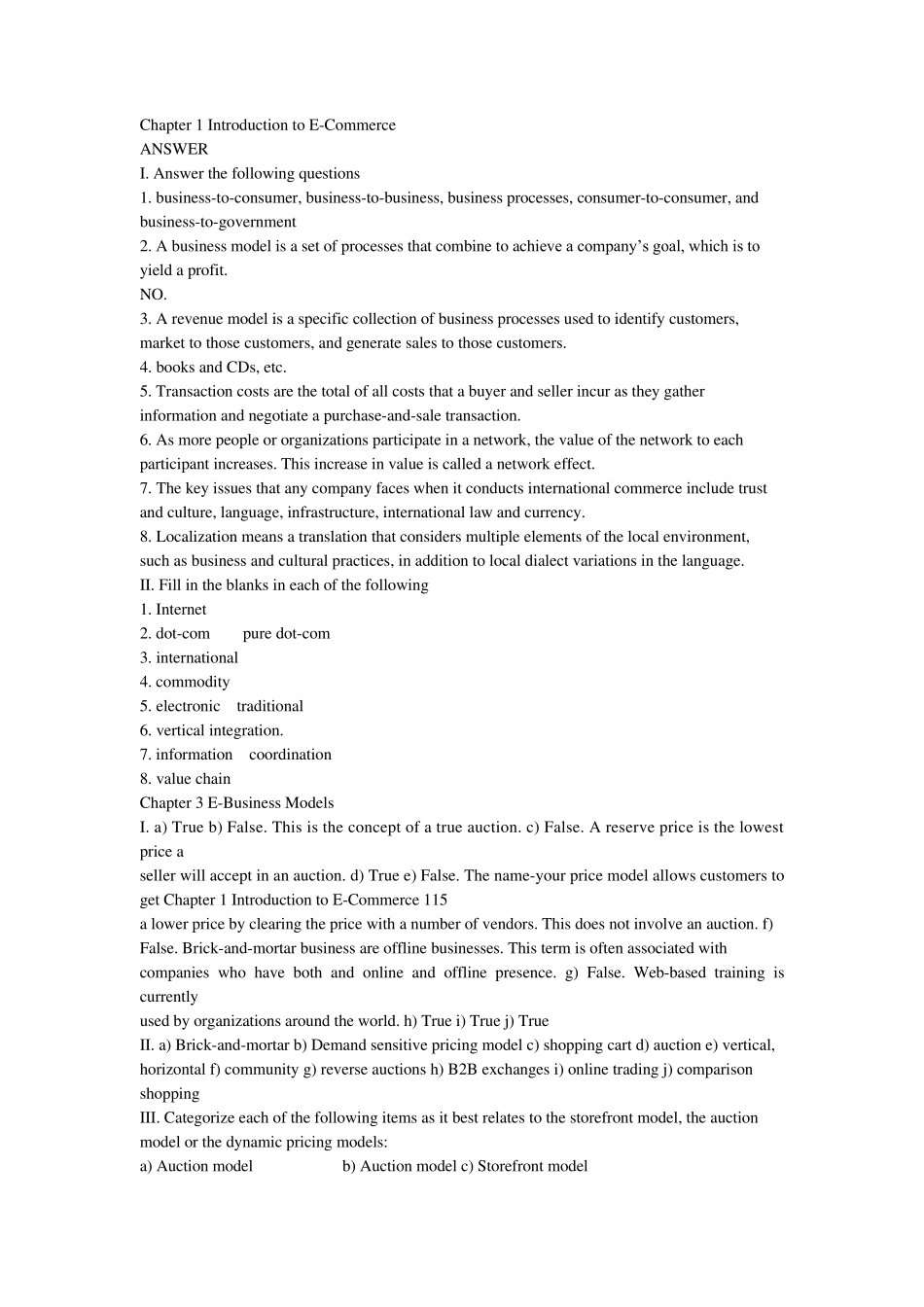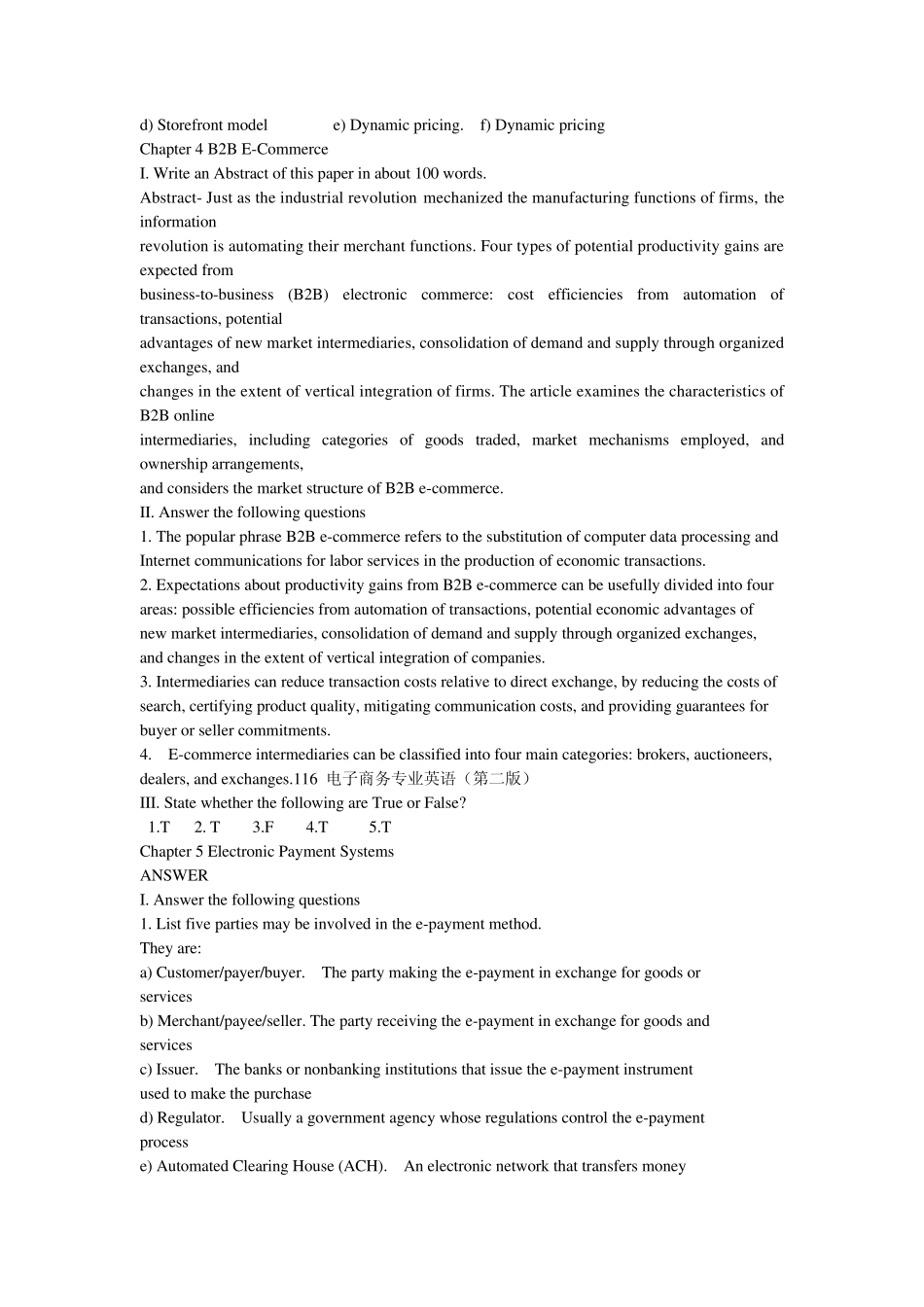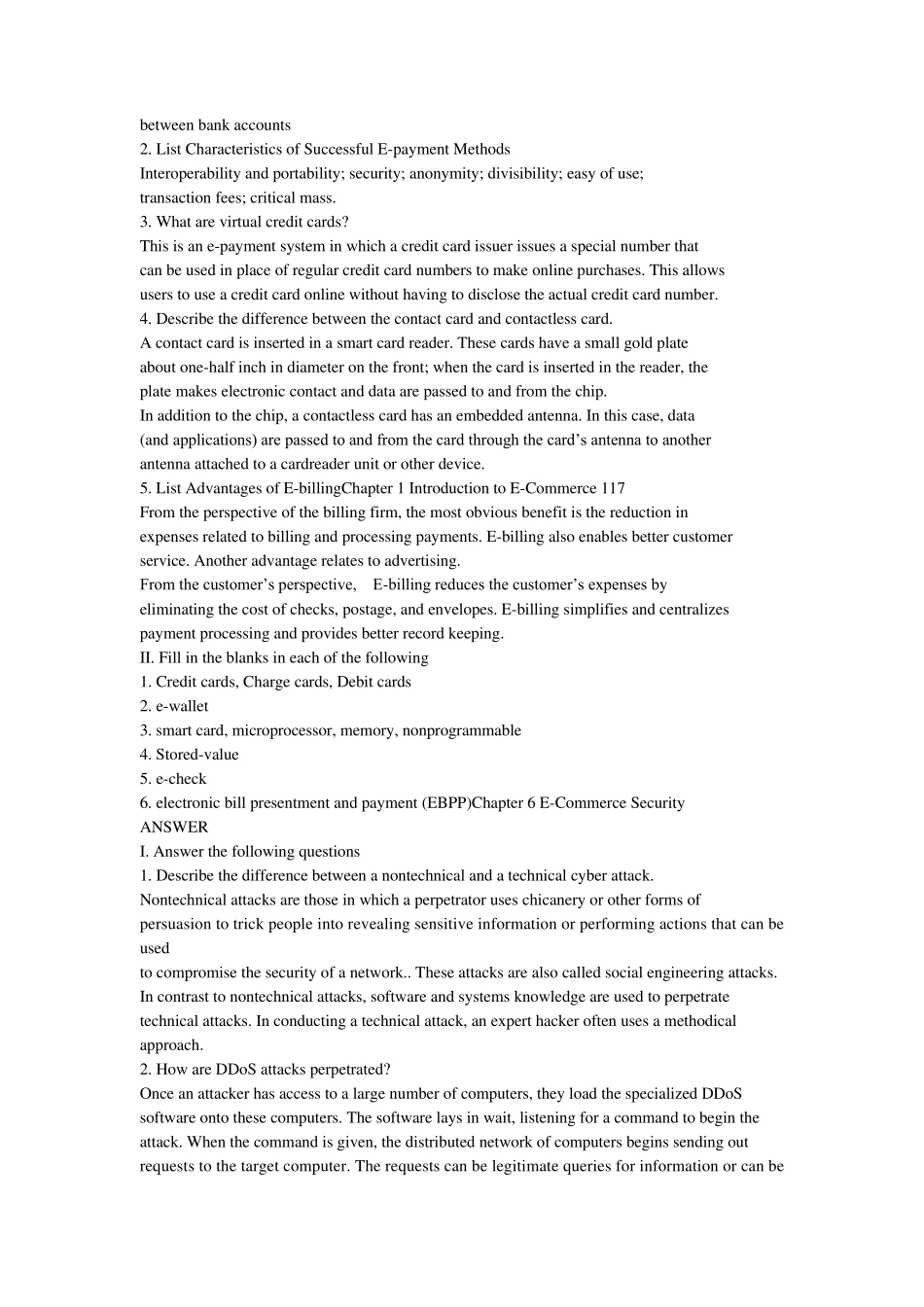Chapter 1 Introduction to E-Commerce ANSWER I. Answer the following questions 1. business-to-consumer, business-to-business, business processes, consumer-to-consumer, and business-to-government 2. A business model is a set of processes that combine to achieve a company’s goal, which is to yield a profit. NO. 3. A revenue model is a specific collection of business processes used to identify customers, market to those customers, and generate sales to those customers. 4. books and CDs, etc. 5. Transaction costs are the total of all costs that a buyer and seller incur as they gather information and negotiate a purchase-and-sale transaction. 6. As more people or organizations participate in a network, the value of the network to each participant increases. This increase in value is called a network effect. 7. The key issues that any company faces when it conducts international commerce include trust and culture, language, infrastructure, international law and currency. 8. Localization means a translation that considers multiple elements of the local environment, such as business and cultural practices, in addition to local dialect variations in the language. II. Fill in the blanks in each of the following 1. Internet 2. dot-com pure dot-com 3. international 4. commodity 5. electronic traditional 6. vertical integration. 7. information coordination 8. value chain Chapter 3 E-Business Models I. a) True b) False. This is the concept of a true auction. c) False. A reserve price is the lowest price a seller will accept in an auction. d) True e) False. The name-your price model allows customers to get Chapter 1 Introduction to E-Commerce 115 a lower price by clearing the price with a number of vendors. This...


